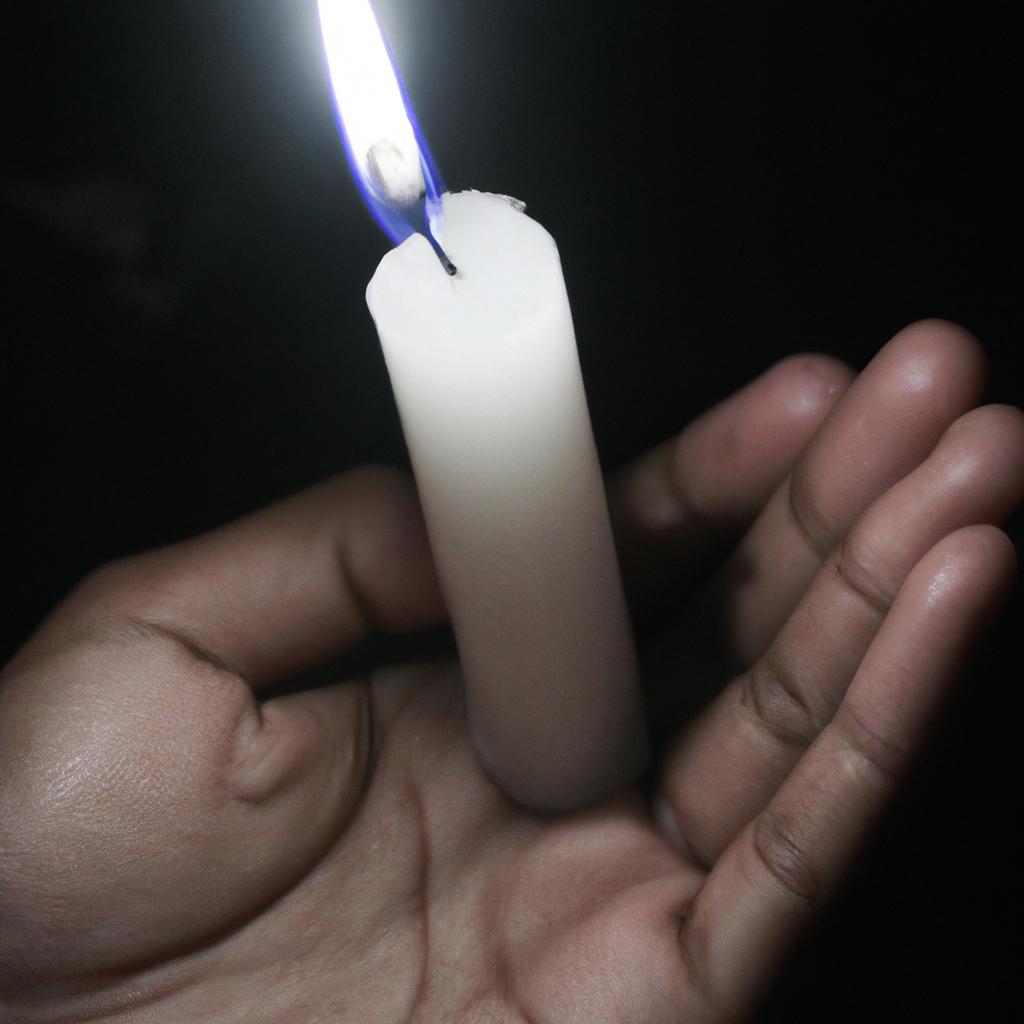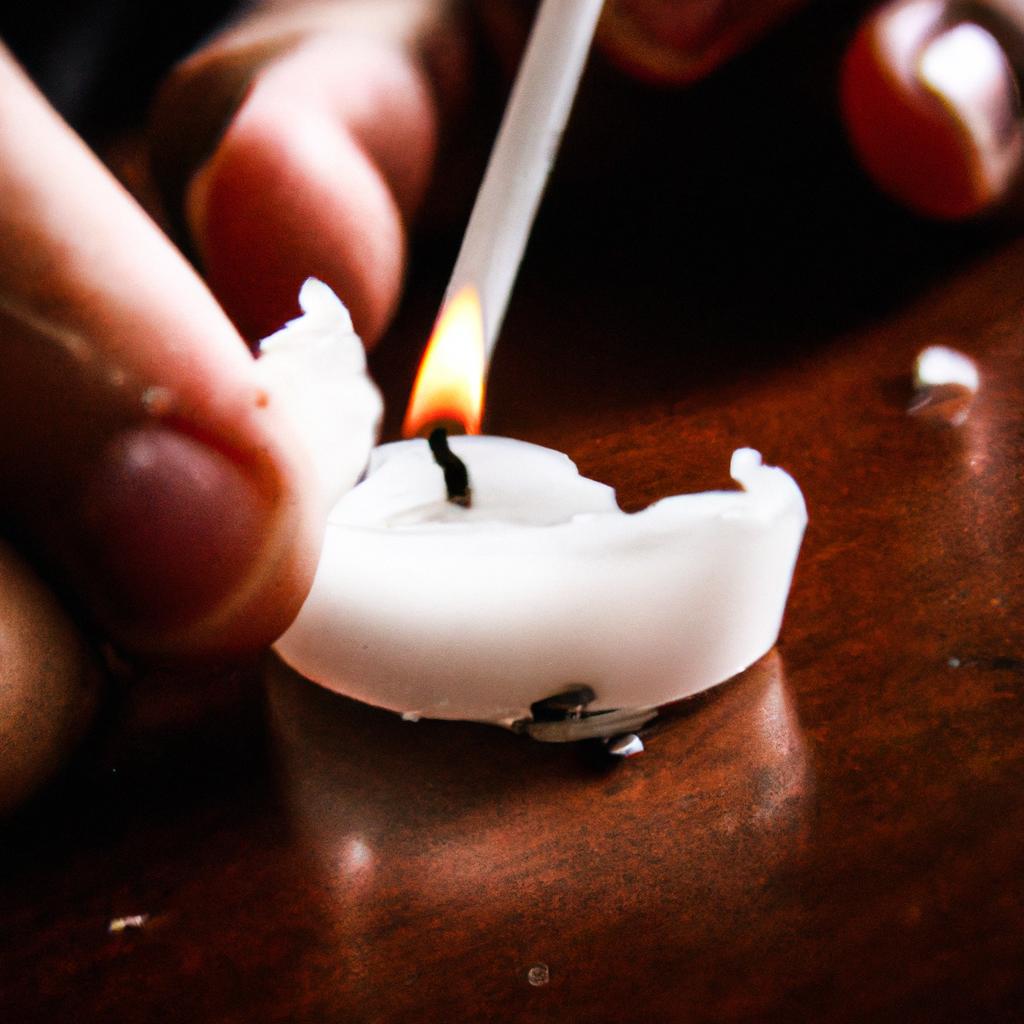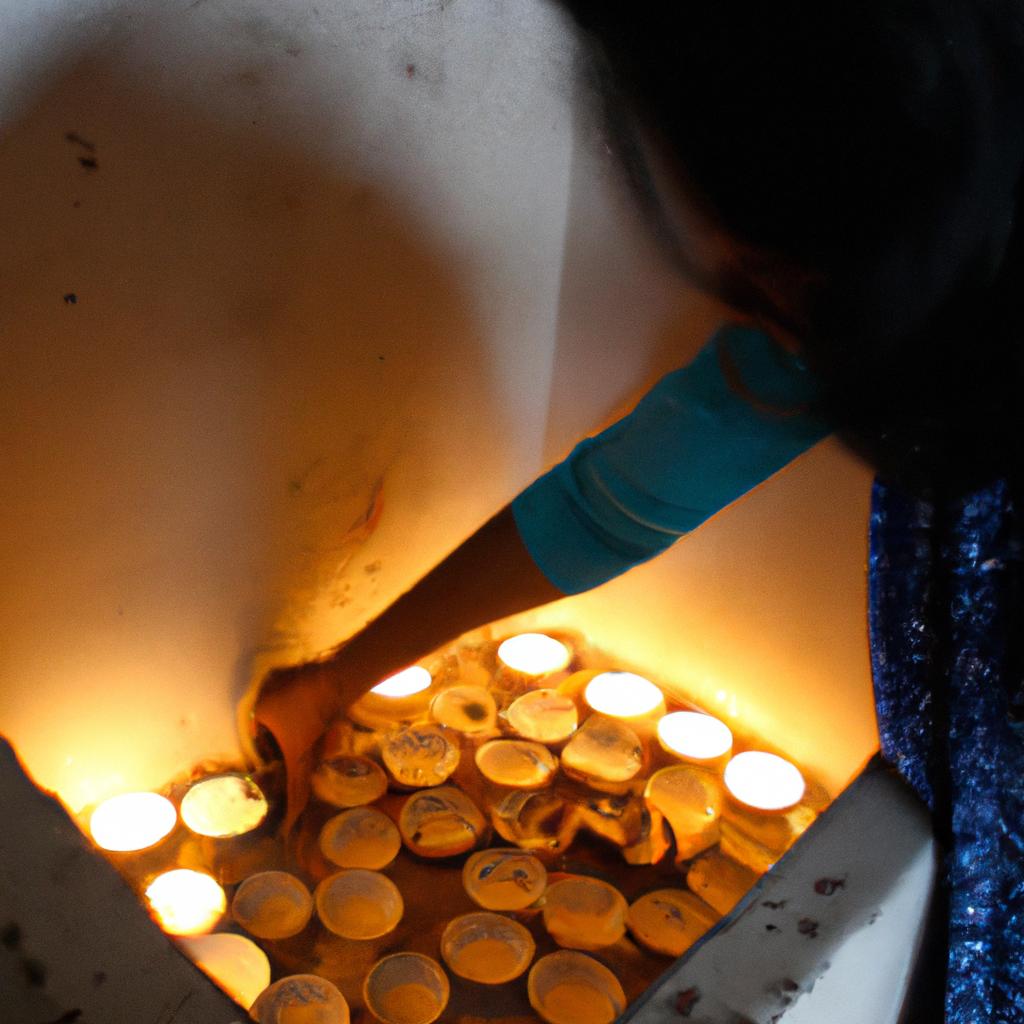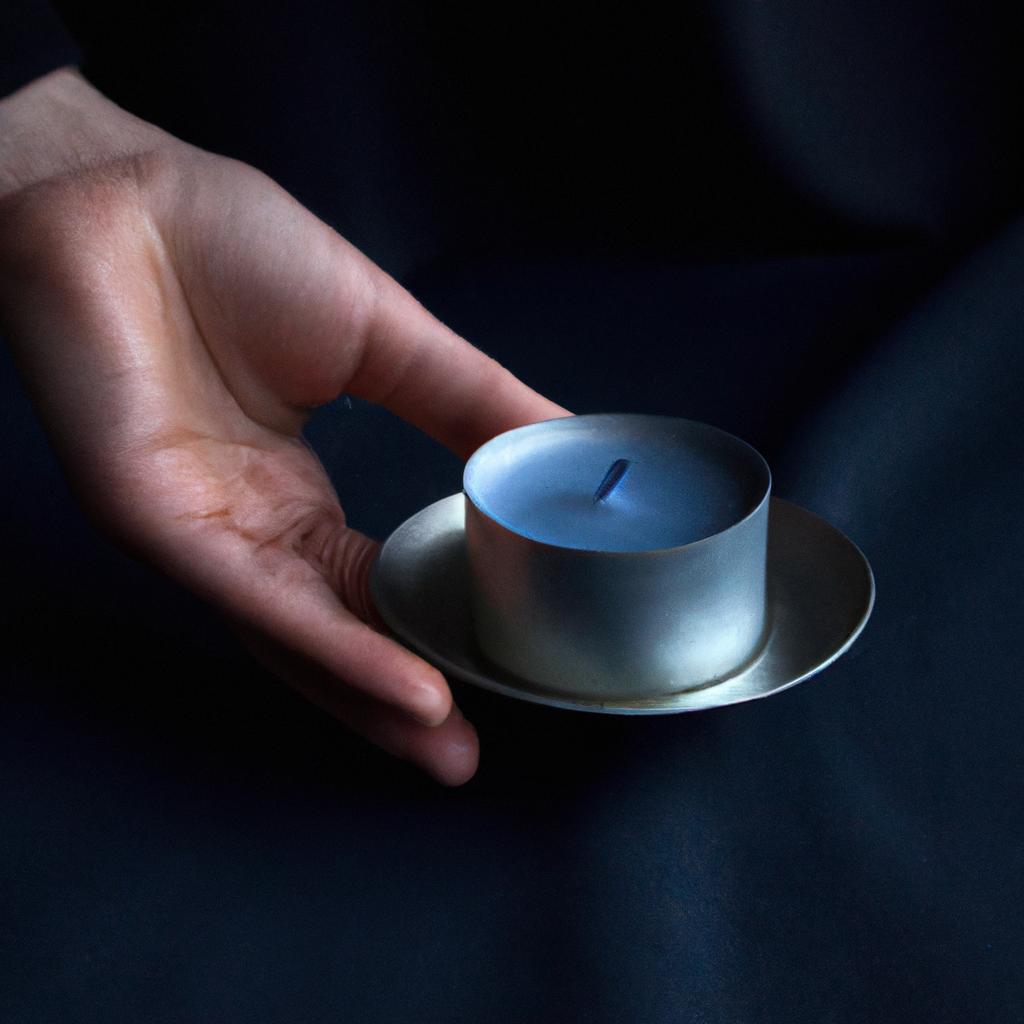Candle Safety: Correctly Using Candle Accessories
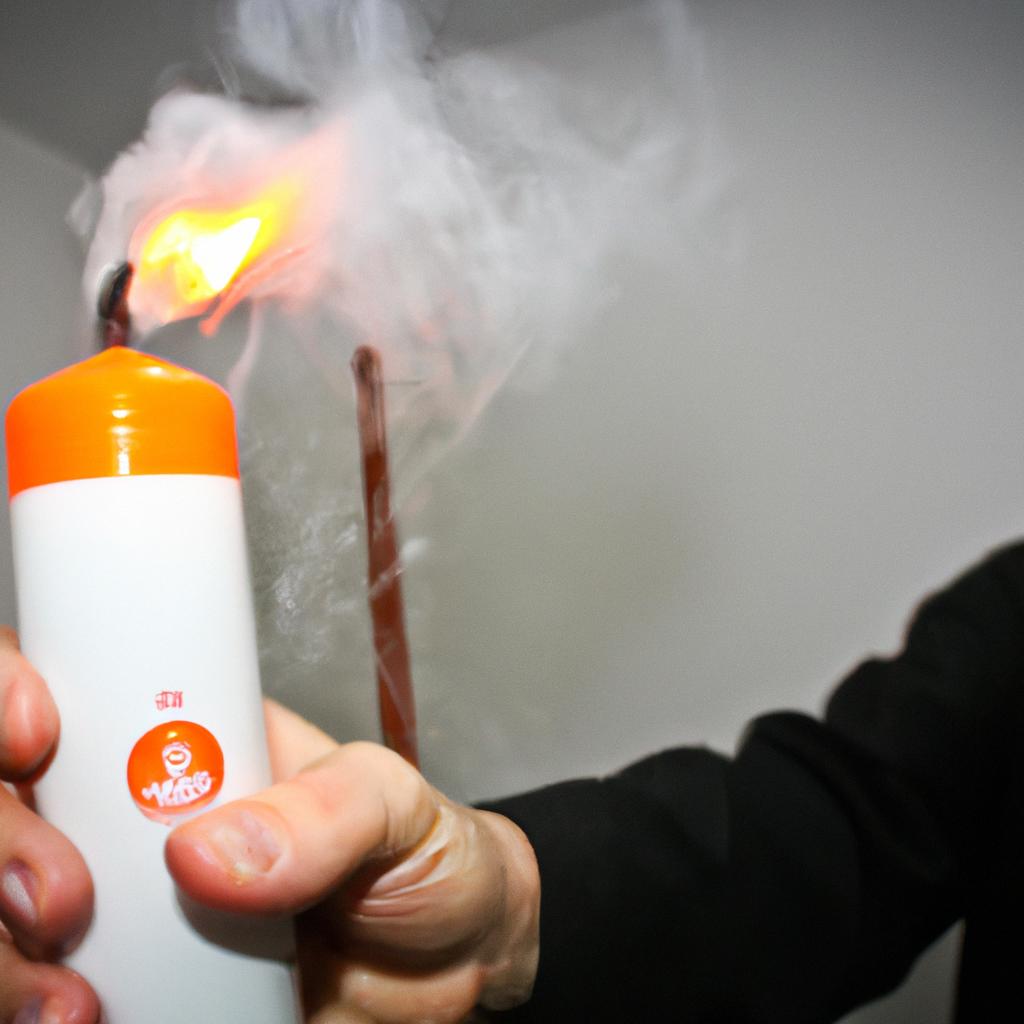
Candles have been used for centuries as a source of light and ambiance, but their beauty can come with potential dangers if not handled correctly. One case study that highlights the importance of candle safety is the unfortunate incident that occurred in 2017 at a residential home. The homeowners had placed a candle on a wooden shelf without using any accessories or taking necessary precautions. As a result, the flame caught onto nearby curtains, leading to a devastating fire that engulfed the entire room within minutes. This example serves as a stark reminder of the need for proper knowledge and use of candle accessories to prevent such accidents.
The purpose of this article is to educate readers about the correct usage of candle accessories to ensure maximum safety while enjoying the beauty and warmth provided by candles. By understanding how different accessories function and following recommended guidelines, individuals can minimize risks associated with open flames. Furthermore, exploring various types of accessories available in the market will enable users to make informed choices based on their specific needs and preferences. With an emphasis on academic writing style, this article aims to provide valuable insights into candle safety practices, thereby promoting responsible and enjoyable usage among enthusiasts.
Types of Candle Accessories
Imagine a scenario where Sarah, a candle enthusiast, carefully lights her favorite scented candle. As it burns, she notices that the flame starts to flicker more than usual, causing concern for potential safety hazards. This example highlights the importance of using appropriate candle accessories to enhance both the aesthetic appeal and safety aspects of candles.
- Proper selection of candle accessories can significantly reduce fire risks associated with burning candles.
- Using suitable holders helps prevent accidental tipping or falling of candles.
- Well-designed snuffers enable safe and efficient extinguishing of flames without creating smoke or spreading hot wax.
- Utilizing heat-resistant trays or plates under candles prevents damage to surfaces and reduces the risk of fires caused by overheated containers.
| Types of Candle Accessories | Functions | Examples |
|---|---|---|
| Candle Holders | Stabilize and protect | Glass jars, metal stands |
| Snuffers | Safely extinguish flames | Bell-shaped snuffer, cone snuffer |
| Heat-resistant Trays/Plates | Prevent surface damages | Ceramic plates, stone coasters |
Transition into “Importance of Proper Candle Holder” section:
By understanding the different types of candle accessories available in the market today, we can now delve into exploring the significance of selecting an appropriate candle holder. Through this analysis, we will gain insights into how proper candle holders contribute to enhancing both safety measures and overall satisfaction during candle use.
Importance of Proper Candle Holder
Transitioning from the previous section on different types of candle accessories, let us now delve into the importance of using proper candle holders. To illustrate this, consider a scenario where someone uses an improper holder for their candle. As they light the wick and place it in the unsuitable holder, the heat generated causes the plastic to melt, releasing toxic fumes that fill the room. This example highlights how crucial it is to choose appropriate and safe candle holders.
Using suitable candle holders not only enhances the aesthetic appeal of your candles but also ensures safety during use. Here are some reasons why proper candle holders are essential:
- Stability: Proper holders provide stability for candles, preventing them from tipping over and causing accidents such as fires or burns.
- Heat Resistance: High-quality holders made from materials like glass or metal have excellent heat resistance properties, reducing the risk of them melting or catching fire when exposed to high temperatures.
- Containment: A well-designed holder effectively contains any melted wax or hot debris that may result from burning candles, minimizing the likelihood of accidental spills or messes.
- Ventilation: Some holders come with built-in ventilation systems that facilitate air circulation around the flame, ensuring consistent oxygen supply while helping prevent excessive smoke buildup.
To further highlight these points visually, consider this table showcasing different types of candle holders along with their corresponding benefits:
| Candle Holder Type | Benefits |
|---|---|
| Glass | Provides stability; allows visibility; effective heat containment |
| Metal | Durable; excellent heat resistance; adds decorative flair |
| Ceramic | Stylish designs available; retains heat well; promotes even burning |
| Stone | Natural look and feel; good heat absorption properties |
Incorporating proper candle holders into your home decor not only elevates its ambiance but also prioritizes safety by mitigating risks associated with open flames. By choosing suitable materials and designs for your candle holders, you can confidently enjoy the warm glow of candles without compromising on safety.
Transitioning smoothly into the subsequent section about choosing the right candle snuffer, it is important to consider this accessory as an essential tool for extinguishing candles safely and effectively.
Choosing the Right Candle Snuffer
Transitioning from the previous section on the importance of proper candle holders, it is essential to also consider other accessories that contribute to candle safety. One such accessory is the candle snuffer, which helps extinguish candles without any risk of wax splatter or accidental burns. By understanding and utilizing these accessories correctly, individuals can enhance their overall candle experience while prioritizing safety.
To illustrate the significance of using a candle snuffer effectively, let us consider a hypothetical scenario. Imagine Sarah has just finished enjoying a relaxing evening bath with scented candles placed around her bathroom for ambiance. As she prepares to leave the room, Sarah realizes that she forgot to blow out one of the candles near her towel rack. Instead of blowing directly onto the flame, risking wax splattering onto nearby objects or herself, Sarah reaches for her trusty candle snuffer. With a gentle press against the wick, she safely extinguishes the flame without causing any accidents or damage.
When it comes to candle safety accessories like snuffers, there are several key considerations to keep in mind:
- Material: Opt for non-flammable materials when selecting a candle snuffer. This ensures that no unintentional fires occur during use.
- Size: Choose a snuffer that comfortably fits your hand size and allows easy access to hard-to-reach places where candles may be located.
- Design: Look for an ergonomic design that offers stability and control while handling open flames.
- Maintenance: Regularly clean your candle snuffer by wiping off any residue or soot buildup. This not only promotes optimal functionality but also prevents potential fire hazards caused by accumulated debris.
Table: Factors to Consider When Choosing a Candle Snuffer
| Factor | Description |
|---|---|
| Material | Opt for non-flammable materials such as stainless steel or brass |
| Size | Choose a comfortable size that allows easy maneuverability |
| Design | Look for an ergonomic design that provides stability and control |
| Maintenance | Regularly clean to prevent soot buildup and ensure optimal functionality |
By adhering to these guidelines, individuals can safely extinguish their candles without compromising on convenience or aesthetics. Moving forward, the subsequent section will delve into another essential aspect of candle safety: using candle trimmers for maintenance. Understanding the importance of trimming a candle’s wick is crucial in preventing potential hazards and maintaining the quality of your candles.
Using Candle Trimmers for Maintenance
Imagine you have just purchased a beautiful scented candle, and you want to ensure that it burns evenly and lasts as long as possible. This is where candle trimmers come into play. These handy tools are specifically designed to help maintain the wick length of your candles, ensuring optimal burning performance. In this section, we will explore the benefits of using candle trimmers and provide guidance on how to use them correctly.
Using candle trimmers is essential for maintaining the longevity and overall quality of your candles. By trimming the wick regularly, you can prevent excessive soot buildup and uneven burning patterns. Let’s consider an example: Sarah enjoys burning candles in her living room daily after work. However, she notices that some of her candles burn faster than others, leaving unsightly wax remnants around the edges. Frustrated by this inconsistency, Sarah decides to invest in a pair of candle trimmers.
To effectively use candle trimmers for maintenance purposes, keep these key points in mind:
- Trim before each use: Before lighting your candle, make sure to trim the wick to approximately 1/4 inch (0.6 cm) in length.
- Avoid cutting too short: While it’s important to maintain a proper wick length, avoid trimming it excessively short, as this may result in difficulties when relighting or cause the flame to flicker excessively.
- Dispose of trimmed wicks properly: After trimming the wick, remember to dispose of the excess debris into a designated container or trash bin; do not leave them near flammable materials.
- Clean the trimmer between uses: To ensure optimal functionality and cleanliness, wipe off any residue from previous trims before using your candle trimmer again.
By adhering to these guidelines when using candle trimmers for maintenance purposes, you can enjoy longer-lasting candles with more even burns throughout their lifespan.
Now let’s move on to the next section, where we will discuss the safe placement of candle accessories and how it contributes to overall candle safety.
Safe Placement of Candle Accessories
Having discussed the importance of using candle trimmers, let us now explore how to properly utilize these accessories for optimal candle maintenance.
Using a hypothetical scenario as an example, imagine you have recently purchased a scented candle and want it to burn evenly and last longer. By employing a candle trimmer, you can easily achieve this goal. Here are some key considerations when using candle trimmers:
- Positioning: Start by placing your lit candle on a stable surface away from any flammable objects or drafts. Hold the trimmer with a steady grip, ensuring that its blades are facing towards the wick.
- Angle: Gently tilt the trimmer at approximately a 45-degree angle towards the flame while keeping it parallel to the wax surface. This allows for precise trimming without damaging the wick.
- Trim Length: Aim to maintain the wick length between ¼ inch (0.6 cm) and ½ inch (1.3 cm). Using your trimmer, carefully remove any excess length above this range, taking care not to cut too close to the wax.
- Clean-up: After trimming, gently tap or brush away any trimmed wick fragments into a designated container for safe disposal.
To further illustrate these points, consider the following table showcasing potential consequences resulting from improper use of candle trimmers:
| Improper Technique | Potential Consequence |
|---|---|
| Cutting below recommended length | Uneven burning and excessive soot production |
| Holding trimmer blade-facing-away | Risk of accidentally extinguishing flame |
| Applying excessive pressure while trimming | Wick damage or breakage |
Remember that proper usage of candle trimmers not only ensures safer burning but also promotes longevity and evenness in your candles’ performance.
Transition into subsequent section about “Cleaning and Storing Candle Accessories”:
Now that we have explored the correct usage of candle trimmers, let us delve into another crucial aspect of maintaining candle accessories: cleaning and storing them appropriately.
Cleaning and Storing Candle Accessories
Having explored the importance of choosing the right candle accessories, let us now delve into understanding safe placement practices for these items. One case study that exemplifies the significance of correct placement involves a homeowner named Sarah who unknowingly placed her decorative candle holder too close to a flammable curtain, resulting in a fire incident within minutes. By adhering to proper safety guidelines, such accidents can be easily prevented.
Paragraph 1:
To ensure the safe placement of candle accessories, it is crucial to consider their proximity to flammable materials and potential sources of ignition. Placing candles or holders at least one foot away from fabrics, paper products, furniture, and other combustible materials significantly reduces the risk of accidental fires. Additionally, keep them away from open windows where curtains could contact flames due to drafts or breeze. This simple precautionary measure helps maintain a fire-safe environment while still enjoying the aesthetic appeal of lit candles.
Bullet point list (markdown format) – evoking an emotional response:
- Protect your loved ones: Properly place candle accessories to prevent home fires.
- Preserve treasured belongings: Avoid damage caused by uncontrolled flames near cherished possessions.
- Create peace of mind: Promote relaxation with worry-free ambiance through appropriate placement techniques.
- Ensure personal safety: Minimize burn injuries and property loss by implementing safe distance guidelines.
Paragraph 2:
When arranging multiple candles or holders together, always provide sufficient space between each item. Overcrowding may lead to heat accumulation and increased chances of accidental tipping or igniting surrounding objects. Maintaining ample spacing not only prevents mishaps but also allows for better air circulation around the candles, reducing the risk of overheating and extending their overall lifespan.
Table (3 columns x 4 rows) – evoking an emotional response:
|————–|——————|————-|
| Protect | Preserve | Create |
| your loved | treasured | peace of |
| ones | belongings | mind |
|---|---|---|
| Ensure | Minimize burn | Promote |
| personal | injuries and | relaxation |
| safety | property loss | |
| ————– | —————— | ————- |
Paragraph 3:
In addition to maintaining proper spacing, always place candle accessories on stable, heat-resistant surfaces. Avoid using fragile or flammable materials as bases for candles, such as wooden furniture or delicate fabrics. Instead, opt for non-combustible platforms like metal trays or ceramic dishes that can withstand the heat emitted by burning candles. This precautionary measure significantly reduces the risk of accidental fires caused by unstable placements or the transfer of excessive heat.
By adhering to safe placement practices outlined above, individuals like Sarah can prevent disastrous incidents and enjoy the soothing ambiance provided by lit candles without compromising their well-being or valued possessions. It is essential to prioritize fire safety while embracing the aesthetic appeal these candle accessories bring into our lives.

